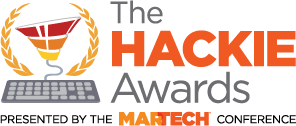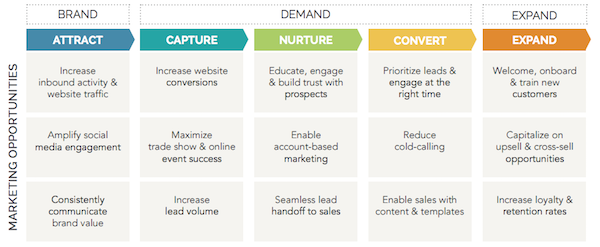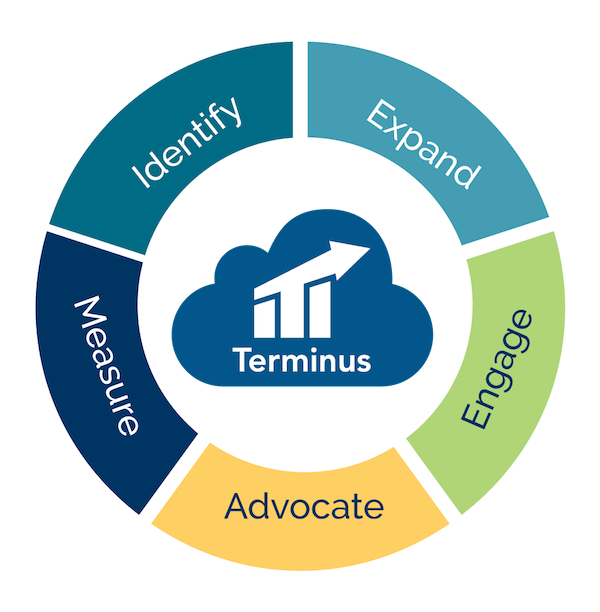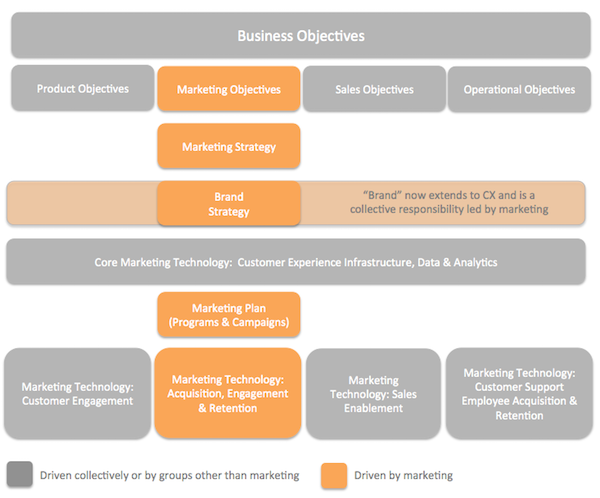This article is a guest post by Linda West and Hari Raghavan of Act-On Software. It was entered into The Hackies essay contest for the upcoming MarTech conference. Like it? You can register your vote in the contest by sharing it on social media, especially LinkedIn, Facebook, and Twitter.
It can be awful easy to look at technology as an end unto itself — an answer to all your problems as a marketer, rather than a way to arrive at answers on your own. It’s even easier when you’re a marketer at a company that is itself a marketing technology provider, serving other marketers: lines blur, wires cross, and over time (often before you know it), you’ve forgotten what it means for form to follow function — to practice what you preach.
That’s why we at Act-On took it upon ourselves last year to rethink our approach — to step back a moment from the technologies we used, even the technology we ourselves offered (a marketing automation solution), to see whether marketing as a broader discipline was still what we’d once known it to be: demand-gen driven.
What resulted wasn’t just a new paradigm for using our technology, but a new framework for supporting it within our company, and for implementing marketing technologies overall — a marketing department broken out by the functions everyday marketers prioritized (brand, demand, and customer marketing), mapped to the solutions they used, and shaped around a centralized bureau for services and ops (an in-house agency, essentially).
Our hack, in other words: fitting form to function. Creating a persona-driven marketing organization that modeled the unique use cases and applications of the marketing automation technology we both provided to customers and used ourselves.
Here’s how we got there…
The research.
To start with, we put together a survey for more than 250 senior-level marketers nationally, at B2B and B2C firms alike, to gauge the value they placed on brand, demand, and customer marketing programs.
We wanted to get a sense of how their departments operated: how overall success was measured, how marketing resources and budget were allocated by function, if one function in particular won out over others. This, we felt, would help us to ensure we not only marketed our product in a way that answered these marketers’ needs, but built a product that reflected what modern marketing entailed.
The responses we received were eye-opening. 87% of the companies surveyed reported that they spent more time in functions outside of demand gen, while top performers in particular (companies that regularly outperformed their ROI objectives) took a balanced approach to their marketing overall, allocating time, resources and budget to each of their marketing efforts evenly — brand marketing, demand generation, and customer marketing.
Marketing automation, we understood from this, clearly had value to offer beyond demand generation, and indeed a bigger role to play in the customer experience overall.
The results.
The first step we took upon learning this was to build features within our product specific to each of these functions — workspaces to support brand, demand, and customer marketing efforts equally.
Since their creation, marketing automation platforms have been engines for demand generation. But modern marketers must do more than generate leads and opportunities. They must steward the customer relationship from start to finish, creating cohesive, thoughtful, and data-driven experiences long before lead creation, and long after the customer signs on the dotted line. The technology marketers use should help them achieve all (not part) of that objective.
But the next step, and ultimately the step we’d urge others to consider, was to reshape and realign our marketing department altogether, so that every team reflected and addressed a specific function our core technology served — so that every team, essentially, was their own domain expert, with insight into specific applications of marketing automation, and their specific slice of the buyer’s journey.
What it meant for each team to look after their own segment of the buyer’s journey:
The changes.
The new structure was simpler and more streamlined — personnel aligned to function, mapped to technology:
- a brand marketing operation, overseen by a single head of brand (handling public relations, analyst relations, social media, event marketing);
- a demand marketing outfit, beneath a head of demand (lead generation programs, nurture programs, partner marketing);
- a customer marketing team, led by a head of customer (case studies, references, up-sell opportunities, long-term brand advocacy);
- all supported by a centralized services and operations bureau (web, content, digital, and marketing technology).
Each team and team leader then worked from a shared marketing automation instance (the company’s own), all responsible for stewarding a unique piece of the customer journey; and applying marketing automation to their respective functions.
Members of the brand team, for instance, used marketing automation to upload and nurture lists of journalists and analysts, tracking the company’s interactions with key influencers, assessing how overall messaging was received (clicks, downloads, email follow-up from reporters).
The demand team, in turn, used marketing automation in conjunction with a CRM to identify opportunities by title and function (businesses adopting MA for awareness, versus businesses needing MA for demand, or businesses relying on MA for renewals), and to nurture prospects with custom content accordingly (assets tailored to their use case).
The expand team, for its part, leveraged the same MA-CRM sync to audit and assess existing accounts in a position to renew, and identify engaged stakeholders in those accounts — heads of brand, demand, customer marketing — for upsell and cross-sell opportunities.
In this way, we were able not only to better understand marketing automation’s larger use cases, but model them. Every team within the company’s marketing organization used marketing automation to tackle opportunities and challenges in their respective areas:
We used this brand, demand, and expand framework to color just about every aspect of our marketing life. From team structure to technology purchases, and content creation to goal setting. And it worked, because ultimately, this framework forced us from an internal, products-driven outlook, to one centered around our customers and future customers.
We’ve used this framework to guide content creation and content goals:
And we’ve used it to orient our goal setting:
The larger lessons.
For many reasons — not least for consistency and coordination — the entirety of the customer lifecycle needs to be orchestrated by marketing.
Sales still owns the human-to-human real-time contact that includes demos and deals, and customer success does the same for training and support. But marketing should be the source for the the branding and messaging that moves the lead through the lifecycle.
Most importantly: marketing is in the best position to turn the customer experience into a continuum of processes where one influences the other, rather than a series of siloed, disassociated touches.
Alignment and consistency throughout all three functions of marketing is critical to the success of an organization. In fact, our survey showed us that organizations with totally aligned brand, demand, and expand functions were likelier to achieve greater levels of measurable success — 43% more likely to achieve revenue goals than organizations that weren’t aligned.
Since the marketer is already using marketing automation — and the platform is already stocked with messaging, branding elements, offers, etc. — it makes sense to extend the platform as an enablement tool in the brand and expand stages of the customer lifecycle. Marketing’s responsibility today goes well beyond the acquisition of net-new leads; therefore, the marketer’s platform of choice must support the marketer through all phases of acquisition, retention, and expansion marketing efforts.
What did you think of this article as an entry in The Hackies essay contest for the upcoming MarTech conference? If you liked it, you can register your vote in the contest by sharing it on LinkedIn, Facebook, and Twitter.







